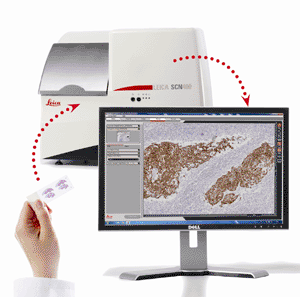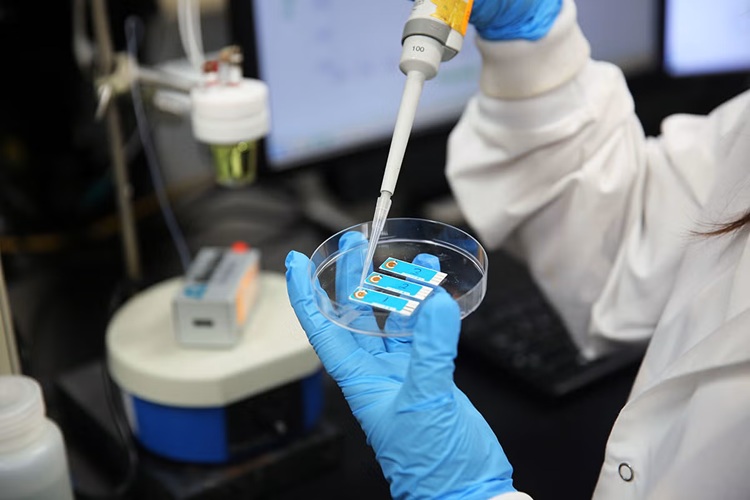Digital Image Hub Integrated with Whole-Slide Informatics Solutions
By LabMedica International staff writers
Posted on 01 Sep 2011
An integrated digital pathology software offering will allow those using image analysis and stereology in digital pathology to achieve a streamlined workflow.Posted on 01 Sep 2011
Leica Microsystems' (Wetzlar, Germany) SlidePath digital image hub is being integrated with Visiopharm's (Medicon Valley, Denmark) whole-slide informatics solutions. Users can now take advantage of superior image capture and management from Leica Microsystems and excellent Whole Slide image analysis and Whole Slide Stereology from Visiopharm in a single system.

Image: Ariol on Leica SCN400 combines leading scanning technology with advanced analysis experience (Photo courtesy of Leica Microsystems).
All images stored on the Digital Image Hub server can be browsed and accessed via the Visiopharm software. Selected images are then easily opened and analyzed by either Visiopharm’s image analysis software or stereology software. Following analysis, users can quickly view the resulting data and associated slides through the Visiopharm software interface.
Leica’s Digital Image Hub, developed by SlidePath, is a scalable enterprise-level solution for the management and archiving of digital slides and associated data. The Digital Image Hub is accessed via a standard internet browser and supports images from a variety of digital slide scanners.
The Stavanger University Hospital (Norway) has chosen Leica Microsystems’ Total Digital Pathology solution for scanning and storage of digital slides, and the Visiopharm solution for image analysis.
Dr. Kjell H Kjellevold, head of the hospital's pathology department said, “For us, the combination of these two systems is ideal. The speed and image quality of the Leica SCN400 slide scanner combined with the Digital Image Hub management solution is exactly what is required for making Digital Pathology feasible for research work. The image analysis software from Visiopharm consolidates simplicity for routine work and the flexibility for research. This, together with the low costs of learning and computation, was critical for our decision.”
Related Links:
Leica Microsystems
Visiopharm
Stavanger University Hospital










 (3) (1).png)



